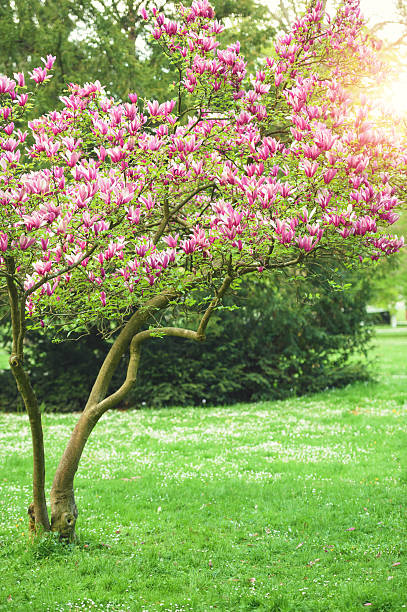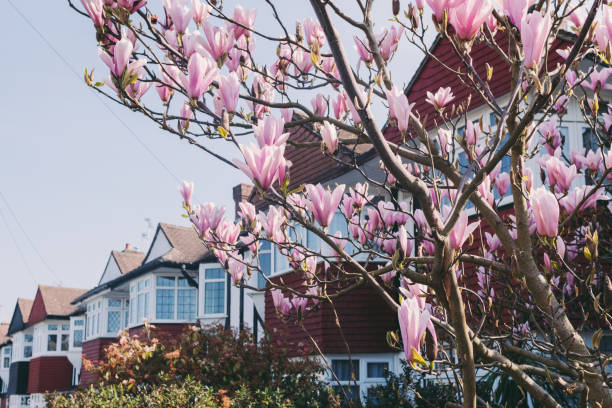How Old Are Magnolia Trees? | Curious Facts About Magnolias
There are quite a few exciting things you need to know about the Magnolia tree. If you want to plant a magnolia tree for yourself or someone else in your family or office, it is better to know how old these trees are.

Table of Contents
History of Magnolias
The genus name is from the Greek “magnon” (μαγνών), which means “great.” In 1737, Swedish botanist Carl Linneaus named Magnolia after French botanist Pierre Magnol (1638-1715). It is now known as Magnolia virginiana. Despite its name, it is an evergreen American species that was already growing in Europe by the mid-eighteenth century. Magnol had described a plant that is now known as Magnolia virginiana.
We can trace the earliest known cultivation of magnolias to Aztec history. It’s during the reign of Montezuma when we can find illustrations of what we now know to be the extremely rare Magnolia dealbata. Even though climate change is largely to blame, this plant only survives in very few places in the wild. The natives cut the flowers for festivals, which prevents the plants from reproducing themselves. It was discovered in 1651 by a Spanish explorer named Hernandez, commissioned by Philip II of Spain. Hernandez was a member of the Royal Geographical Society.
Although magnolias are one of the most primitive plants in history, fossil records show that they existed in Asia, North America, and Europe more than 100 million years ago. They are one of the world’s oldest plants. Currently, they are only found in southern China and the southern United States as wild populations. There are about 80 magnolia species, approximately half of them being tropical. Magnolia is the most numerous of the Magnoliaceae genera. Still, there are also nine other closely related genera, including Liriodendron (which has only one species), Michelia (which has 45 species), and Manglietia (25 species).
Magnoliaceae, Michelias, and Manglietias have all been reclassified as magnolias due to the most recent reclassification. To many people’s surprise, the buttercup is one of the plants with the closest genetic relationship to the magnolia.
Some of the earliest literary references to magnolias are their purported medicinal properties, which are mentioned in several passages. Anyone who has experienced the unique scent of magnolia sap – and what an alluring scent it is – will understand how likely it would appeal to those working in the medical field. Headaches and allergies are treated in Asia with the flower buds of Magnolia salicifolia, which is native to China. A study conducted in 1985 looked into the possibility of using this drug to treat cancer. Another recent study discovered that tonics derived from the bark of Magnolia officinalis help patients with Parkinson’s disease to experience fewer tremors. Who knows what new discoveries may be made in the future.
Magnolias are pollinated in the wild by wingless beetles that are primitive in their appearance. Large size, white or pink color, lack of nectar, and an abundance of pollen are characteristics of flowers pollinated by beetle larvae. Beetles feed on pollen, and despite their pleasant scent, most magnolias do not produce nectar. It is believed that beetles existed many millions of years before winged insects, resulting in their primogeniture appearance. As a result of our climate, most spring-flowering magnolias bloom long before many insects appear in early summer. It explains why many species do not produce seeds or do so infrequently. This results in an interesting spectacle in parts of China, where Magnolia campbellii are predominantly white, creating a striking contrast. When grown in regions of Europe where beetles do not exist, and wind or insect pollination is a reality, Magnolia campbellii is predominantly pink in color. Wilson and Forrest observe that the white-flowered trees are used as firewood by the indigenous people in the wild. The white campbellii is considered one of a kind in the Western hemisphere. This may have as much to do with genetics as it does with beetles, but it does demonstrate how primitive and unique magnolias as plants are.
Magnolia trees are in the family Magnoliaceae. They have a very strong and fragrant smell and can reach 30 meters (98 feet). They grow well in warm, dry places with well-drained soil.

What Is the Average Lifespan of a Magnolia Tree?
Depending on the variety, Magnolia trees can live for up to 120 years. The majority of magnolia trees live between 80 and 100 years. They can, however, live to be quite old if given the proper care, attention, and variety of foods. They also continue to grow and bloom as they age, making them a wonderful addition to any yard or landscaping project.
Determining the Age of a Magnolia Tree
If a magnolia tree is blooming profusely, it is most likely only a few years old, at the very least three years old. On the other hand, most magnolia trees do not begin to bloom until they are ten years old. The blooming of magnolia trees begins when they are young, but they do not produce many blooms until they are at least a few years old.
If magnolia trees produce seeds, they have been around for quite some time. The earliest magnolias can begin producing seeds when they are ten years old. Many, however, do not begin to produce seeds until they are 20 to 25 years old.
While the size of the tree can aid in estimating the age of the tree, it is not a definitive measurement. The only way to tell how old a tree is to cut it down and count the rings is to cut it down yourself.
Each year, the tree adds a new layer of growth, forming a thin dark ring between the new development and the growth from the previous year’s season. By counting the rings on the tree, you can determine how many growing seasons the tree has experienced, or, in other words, how old the tree is. Discovering a way to count the rings without cutting down the tree to reveal them is the challenge. Fortunately, there is a method for achieving this goal. It is a piece of equipment known as an increment borer. But before you conduct the core sampling, you need to know the tools to use.
Increment Borer
The core sample is removed from the tree using an incremental borer. It’s small enough to tuck into a vest pocket or a backpack with ease. The Borer bit and extractor are the three components of the tool’s handle. When selecting an incremental borer, Forestry Suppliers recommends taking the bit length, core diameter, and thread style into account. The depth to which a borer bit can go is determined by its length. The diameter of the threaded opening at the end of the borer bit determines the core diameter that can be extracted. For example, a 0.169-inch opening will yield the same core sample diameter. A two-thread borer or a three-thread borer are your options. A three-thread borer is easier and faster to use. Still, a two-thread borer penetrates deeper into the wood and is more efficient.
Straws
Cores extracted from a tree are stored in straws after being cut out. They are responsible for preventing damage to the cores during transport. Plastic or paper straws are both acceptable options. The use of standard drinking straws to store tree core samples is commonplace. 4.3mm and 5.15mm cores can be stored in 6mm in diameter straws. However, it is possible to order large quantities of paper straws. Plastic straws have the drawback of retaining moisture, so the core sample must be removed as soon as possible to avoid mold growth.
Core Mounts
It is necessary to mount the sample cores after they have dried completely. Core mounts are constructed from wood that is 3/8 inch by 3/8 inch by 4 feet in size and is typically made from yellow poplar. The top is beveled to hold the core samples in place, and a grove is cut into the surface. Core mounts are available for purchase from woodworking supply stores or made by the user. Glue is used to secure core samples into the groove, which is then covered with masking tape or string until the glue has dried.
Steps on Core Sampling
Dendrologists use a variety of tools to study a tree’s core sample. It can tell you about the tree’s age, growth rate, and overall health. These tools are made to cause the least amount of damage to the tree. A core sample is a cylinder taken from a tree.
- Get a borer that can go deeper. This is a tool for getting the core out of a tree. Check the Internet or ask your local forest department to help you find this device.
- Assemble the increment boring tool. First, these steps are done by pushing the locking latch in the handle with your thumb. Then, you should insert the square end of a borer bit into a hole in the handle. Release the latch, so the two pieces are held together in the shape of a “T.”
- Beeswax should be put on the threads and the shank of the borer bit so that it will be easier to get into the tree and be easier to remove.
- An uphill side of a tree is a good place to begin. Then align the bit so that it goes straight into the tree, at the height of about 4 1/2 feet. Drilling into the middle of a tree is the goal.
- Using a small amount of pressure, turn the handle of the bit counterclockwise until the bit starts to penetrate the tree. The increment borer handle should be turned clockwise with your open palms until it reaches the approximate center of the tree after passing through its bark.
- It’s time to insert the extractor into its handle’s center. The extractor will be in the bit’s innermost chambers. Assemble extraction by placing the concave side toward the user (the open end facing the ground). Once the borer is in place, flip the extractor over so the concave side is facing up and counterclockwise turn the handle.
- Extricate the extraction tool from the borer bit. It’s best if the tree’s core comes with it. Turn the handle counterclockwise to remove the tree borer from the tree.
- Count the number of dark rings on the core of your magnolia tree that you have extracted. To find out how many rings there are, count them from the tree’s center to the outer edge. In this case, the number of rings represents the tree’s age.
